Christoph Hess – an interview with Christopher Hector
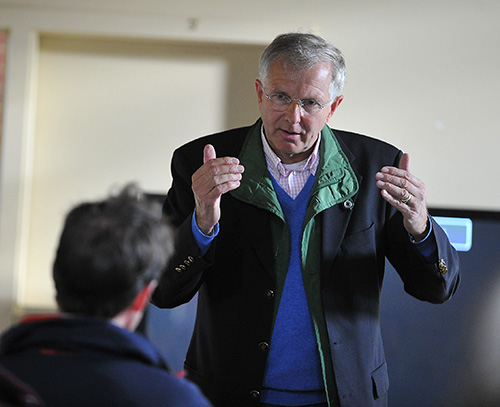
The first time I met Christoph Hess was 20, 30 years ago, when Germany was still a very formal place. So I fronted for my meeting with the Director of Rider Education in the DOKR, suitably tricked out in jacket and tie, to meet this wildly enthusiastic character in an open neck shirt and a pair of jeans. It was the first in an ongoing series of conversations with Christoph, and throughout that time, his enthusiasm has never waned as he has hammered home the principles and practice of correct civilised riding.
When I look at dressage, so often I see riders leaning back, really behind the vertical – and yet when I look back at photos from previous times, riders sat correctly…
“I wouldn’t say that’s only a challenge for this time, but I think the riders have to know they must be with the horse with their upper body, in the movement, not behind. I think many riders think that when they are sitting behind, they have more influence, they have more possibility to use their weight. But I agree with what you say, the answer is, this is not the right way. You have to be with the movement and give the horse the chance to bring up its back.”
“The more the horse’s back is able to come up, the more the back is able to swing. The more pressure you bring into the saddle, the less the back will be able to swing. I’m sure the riders and trainers know it, and the judges know that the bridge between the hind and front legs is the back, and the more pressure you bring with the upper body into the back, into the saddle, the less good it is.”
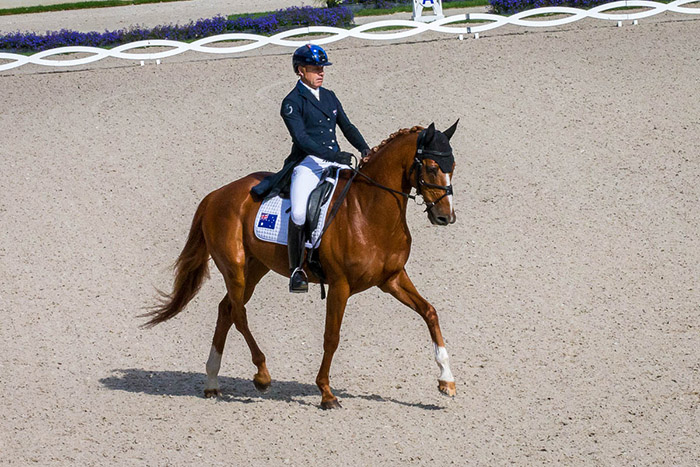
Andrew Hoy and Vassily du Lassos at Aachen this year
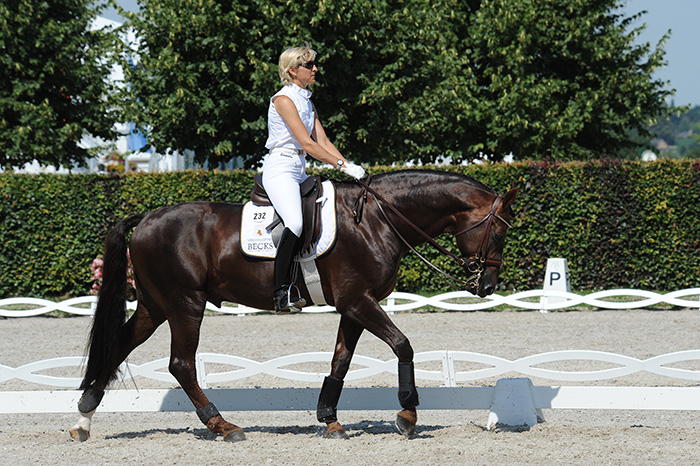
“I think many of the dressage riders can learn from the top eventing riders, they know how to sit. When I am watching dressage riders in the practice arena, they change from pure dressage position to light seat. When I am teaching, I always teach that you come from the light seat to the dressage position and not the other way round. I know in the old days when I started, I thought the dressage position is the most important, but the more I train, and I do it more or less every day, and I train very much in the direction that the riders must come from a rising trot to a sitting dressage position, and from light seat in the canter to the dressage position. When the rider is able to change between both positions in the saddle, then we see the three-beat canter, the two-beat trot, the elasticity and the cadence – then the rider knows, okay my horse is really well trained.”
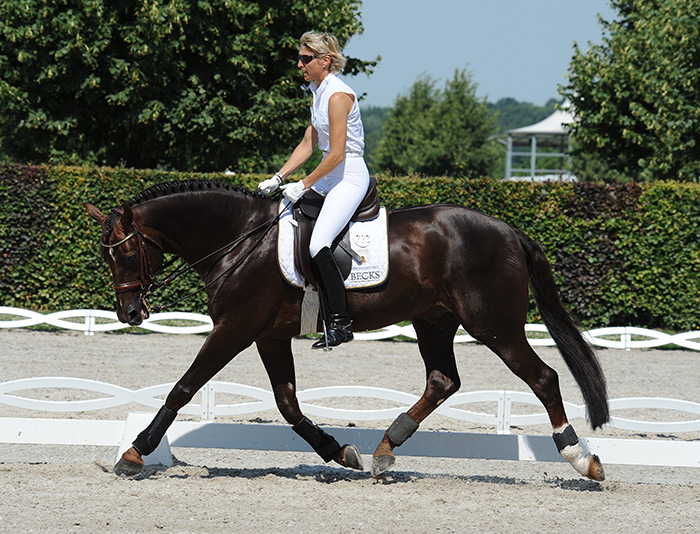
“And for me, it is wrong when the rider is coming with his upper body behind the vertical. For me, the advice to every rider, is rising trot and light seat in canter, do it like this, and when you do this, then as a rider you get another feeling. Looking from the biomechanics point of view, you get more the feeling to be with the horse.”
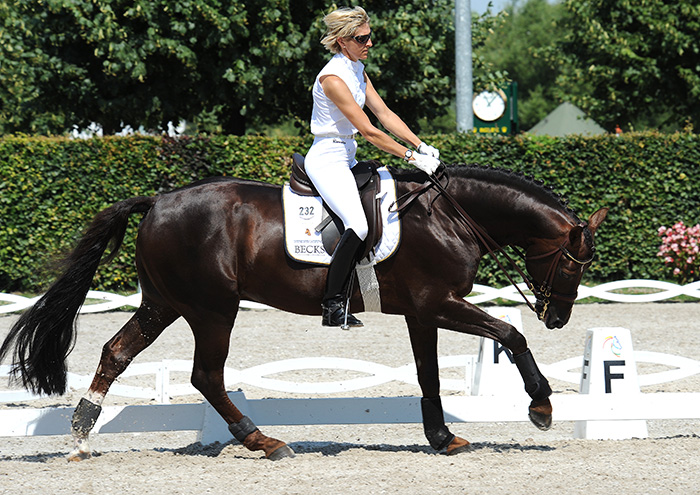
“When you ride always with long stirrups, in Germany or Central Europe for the whole winter indoors, with long stirrups and at the end you are totally stiff in the pelvis, and then I think the problem is that you sometimes come behind the vertical.”
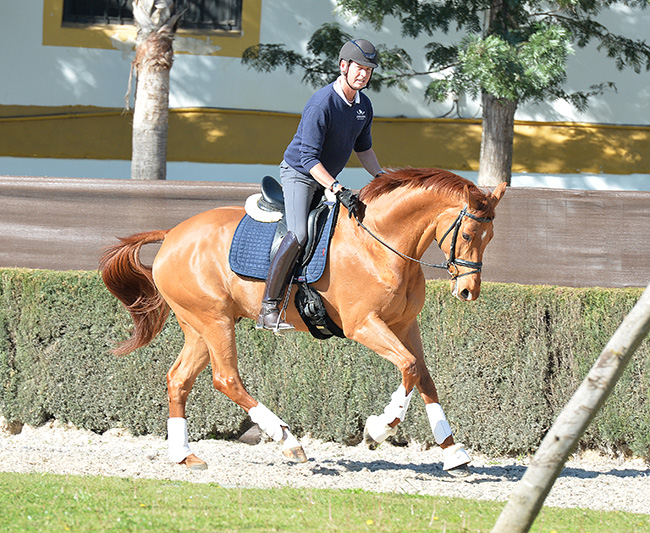
“My advice then is use shorter stirrups, come as much as possible in rising trot, use a light seat in the canter, especially when you start, then you will get, from the rider’s point of view, the right feeling, not coming behind the vertical.”
It’s something we see at the stallion shows, the stallion going 500% across the diagonal with the rider leaning back in the saddle pushing…
“At the end of the day, this is the wrong way to ride, this is the wrong way to present stallions and I hope that the breeders will realise that in that situation, they can’t get a clear idea, is this the right stallion for my mare? Is this the wrong stallion? Because you can’t get a true picture. I like very much stallion shows where they present the stallions as proper riding horses, long rein, giving both reins, re-taking the reins, riding circles. A three-year-old horse in a very soft nice, horse friendly way, like a very young riding horse. That for me is very important. Then later with the four-year-old horse, you can start a little bit more with sitting trot , and with the five-year-old, a little bit more, so that the spectators, the breeders, can say okay that’s a horse of three, a horse of four, that’s a five-year-old, and so on. For me, it is very important to explain this to the breeders, the spectators, the riders.”
“The other way is a very bad way, because it is not looking from the welfare point of very into the right direction, and I think at the end of the day, the government will come and say, this is not allowed, and we will have veterinarians who watch everything and they will say good or bad. Then we have veterinarians standing around the arenas at our shows, for stallions, or in competitions, and they will say, not allowed, not allowed. I would be very unhappy if the government does it, not the Federation with horse people. But we horse people, have the responsibility to stop wrong riding, and this is wrong riding.”
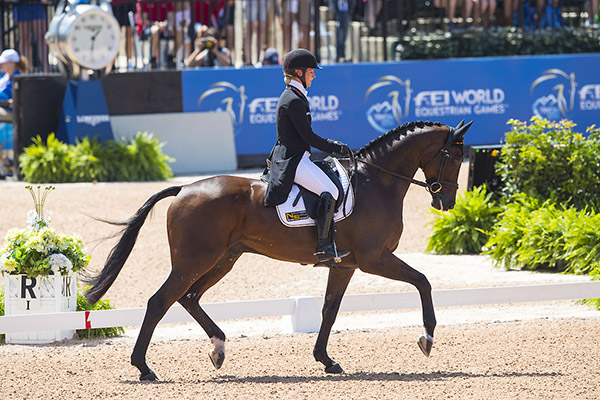
The stylish Gold Medal winner for the German Eventing Team, Julia Krajewski, here with Chipmunk
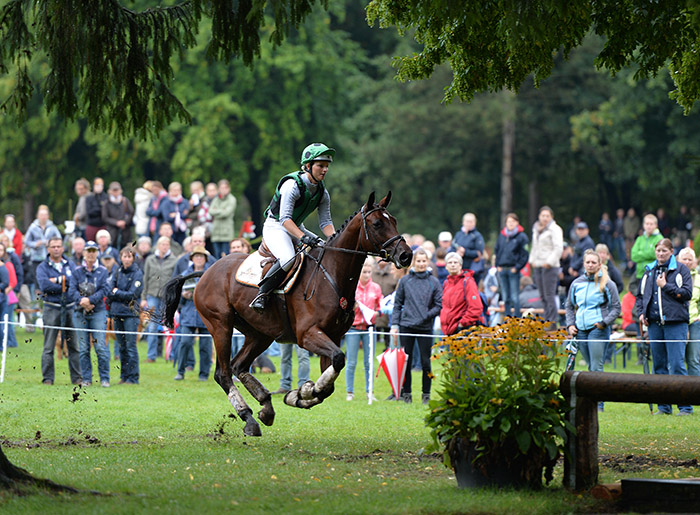
Julia Krajewski and Chipmunk starting out with a win at the Bundeschampionate
And for the riders who have got into the habit of riding like this, leaning back, pushing the horse above it’s natural rhythm, aiming just for spectacular… so your solution is to get them riding in the forward seat…
“That’s it, and we have good examples and as I said, we can often find that with the eventing riders. In the old days, many people were laughing when they saw eventing riders in the test! Now many people should watch how good they are riding, okay the horses do not have the excellent gaits, they are not selected for their movement for dressage, they have to do showjumping and cross country. They have to be very sound, have to be brave, have to be fast cross country, so they need another way of moving, but the way these guys are riding the horses with a well stretched neck, open throat latch, and the riders when they do this have their horses very good and in front of the driving aids, and they are sitting more into the horse’s movement – and this is what the horses love. This is the right way, and an example to others.”
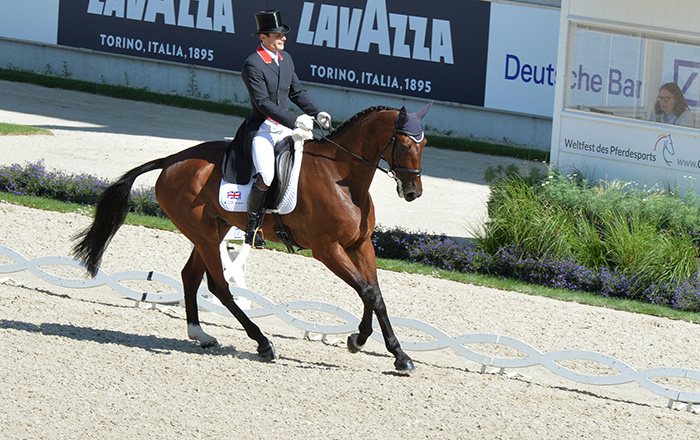
Britain’s Andrew Bragg and Zagreb
“In the old days people were laughing because the riders were not as good, but now in the dressage, and the cross country, and the showjumping, the good ones have made a huge step forward.”
“Right now I am helping the Germans and the British team. In the Spring, I was twice in England for three days, helping the British team. Soon I will be helping the German team. It is interesting to help them from a judge’s and a coach’s point of view, and see the harmony between the horses and the riders. That for me is amazing, to see how they are riding, and I would say, at times, celebrating their horses. This is the spirit we need. To be honest we have a lot of brilliant riders in the pure dressage world, but as you said, we have some sitting behind the vertical, but many do ride excellently.”
It was interesting in Rotterdam, in a younger horse class, there was a professional rider, who sat in a beautiful position, all the way through the test until he got to the medium trot diagonal, and back he went, it was as if, it had become habit – I don’t think he needed to do it, I don’t think it helped him…
“I agree with you, and I think for young horses we should always have the medium trot rising for a better lengthening of the steps – then when they are six years old they can go to an extended trot. In training and in competition, it is good for those younger horses to do it in rising trot.”
“I think we must realise that the most difficult movement is sitting extended trot, to sit in the piaffe is really quite easy but sitting in the extended trot is very very challenging for the rider, he has to be very good in the pelvis with a very good elasticity, otherwise it is not working.”
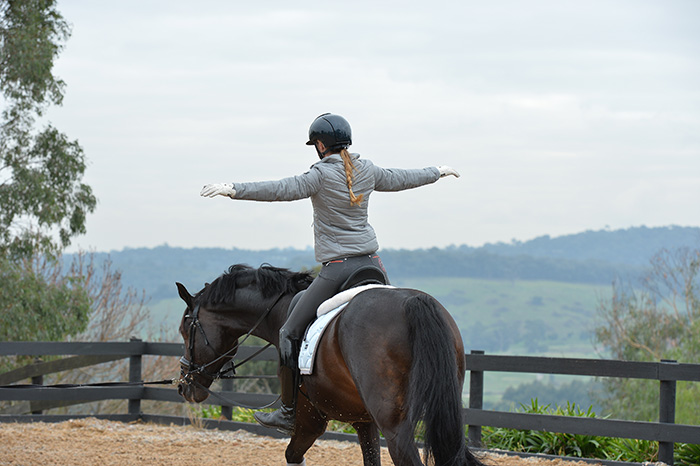
You are doing a lot of coaching at the moment, also through your digital coaching, what exercises do you give the rider to improve their ability to sit the extended trot?
“First of all you have to have a good feeling in the saddle, a good balance and a good suppleness. This is very important, when you don’t have balance and suppleness in the working trot, then you won’t be able to sit the collected trot, and especially not in the medium and the extended trot, therefore I love very much lunging lessons, so the rider can close his or her eyes to start to get the feeling for the movement, because that’s very challenging for many riders. People think sitting on the horse is just fun, just like drinking a cup of coffee – no, it is very challenging and you have to have a good concentration otherwise it is not working, and you have to school it.”
“Looking at it from the educational point of view you have to make the process as easy as possible for the rider. The less the rider has to think about – oh do I have the right contact? And do I have to keep out of the way of others in the arena? You have to take all those other things away, so that the rider can concentrate on just finding balance and suppleness first in the normal trot, the working trot. Coming with a little bit shorter stirrups from rising trot to sitting trot, then make the stirrups longer and find the balance. Then take the stirrups away, and again, find the balance. Give the rider the chance to use his hands on the front of the saddle to find the balance. ”
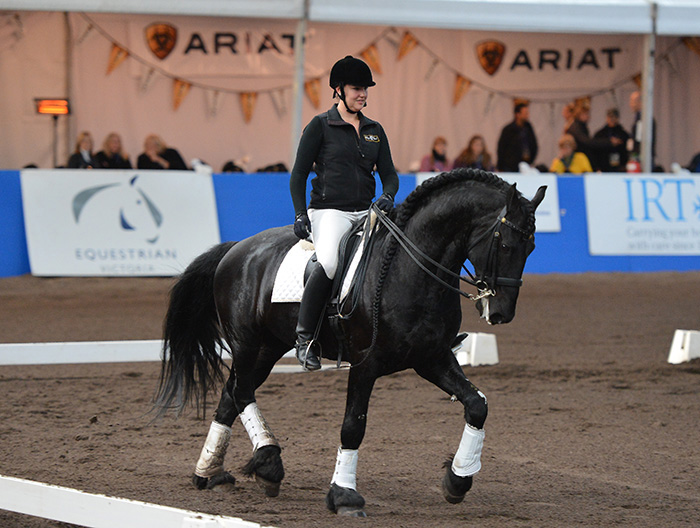
“I like very much for the rider to put both reins in one hand, and put your other hand on your leg so that you control your hands and think more and more swinging from the pelvis.”
“This is what the rider has to learn, to swing from the pelvis, and the more he is able to swing from the pelvis into the horse’s movement, the more he or she is able to ride longer steps – not from zero to extension, but longer steps, step by step. It’s important the horse has a longer moment of suspension, swinging over the back, a horse which is stiff in the back, that’s very difficult to sit on, but if the horse is swinging over the back, and through the body, then it is easier to find a nice balance.”
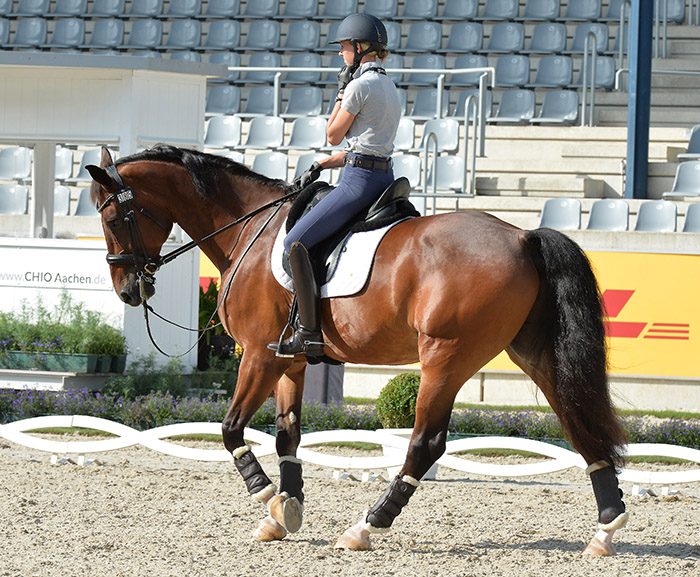
Are you finding many people who want to learn, who are serious about improving?
“Yes. I think every rider wants to learn. I don’t know a rider who just wants to sit on the horse. I think riders who come to a clinic, or a seminar, they want to learn. Not everyone will necessarily agree with my ideas on lunging, but to learn to sit better is very important, and I think we have to keep in our mind, that it is the rider who is the most important, the horse is only the mirror of the rider.”
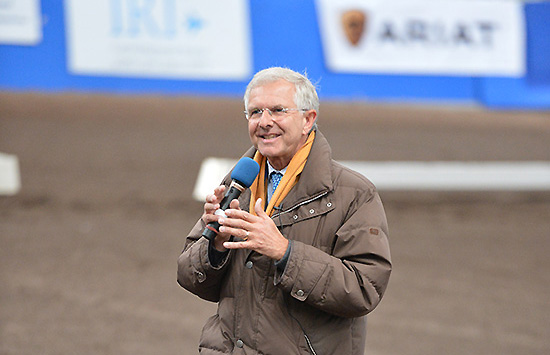
“I don’t like it when the riders always talk about the horses, I think we have more to talk about us – what can I do better as a rider? To give the horse a better feeling. This is what I explain to the riders, not that I say now you have to do lunge lessons, no, I explain why it is important for this particular rider to work on this, I do not try to train all the riders in the same way, leave it to each individual rider to find their special way.”
How are you doing these lessons? The riders are sending you videos, how does it work?
“I have two ways. I have one system which is called On Air Dressage with Christoph Hess. The riders send me a short video, I watch it and the guy who designed this program has a special technique so that when I give my comment looking from the judge’s and coach’s and trainer’s point of view, he brings this on the screen, on the video, this is what happens at On Air Dressage.”
“Then I am giving video lessons. There are various systems, and I like best Facetime, and I have a contact at Whatsapp, then I can give a proper on-line lesson anywhere in the world. Sometimes I start in Germany very early in the morning, then to Australia, then I finish my day in Canada. That’s quite nice, I love it, and I think it’s very good and it is something that is possible, if I do a live physical lesson it’s better, but it is better than doing nothing. Then we can talk and it is a very good way to school. I started just over two years ago, when we had the Covid outbreak, so I did it, and the experience has been positive.”
Where is dressage at the moment, is dressage in a good place?
“Yes, I am a positive thinking person and I think dressage is in the positive position now.”
Have we finally got rid of Rolkur?
“I think it’s important that judges think about it all the time, but now I think we have a clear red line. Earlier, say fifteen years ago, there was more of a discussion especially around long, round and deep and Rolkur. Now I think in general we are in a good way and the judges, from different countries, with different backgrounds, have a similar idea of what is good riding and what is bad riding. Yes, we went through a bad time, but now I think it is quite good. And I think it is good for the sport when we have a strong team from Denmark, it’s good when it’s not always the same riders and horses in front, it’s good for the sport when there is a change. It brings new energy, new thinking, what can we do better.”
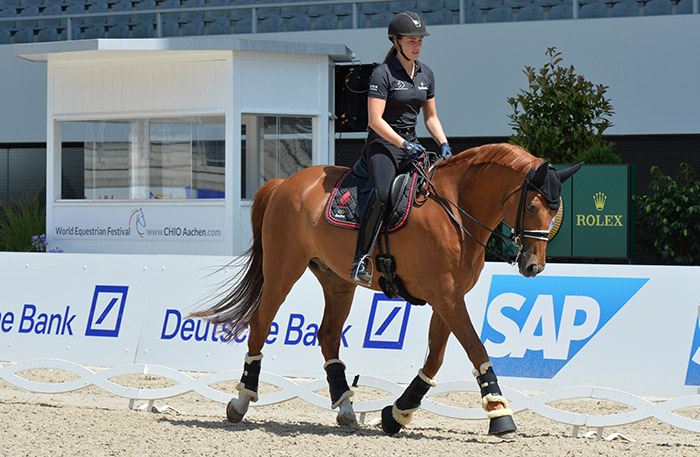
Cathrine Dufour and her first star, Cassidy, who recently retired from competition.
And Cathrine Dufour is such a quiet, sympathetic rider…
“She is a brilliant rider, no doubt she is able to train a number of horses in a good way, but we have other good riders as well, who ride in a similar way, but she is quite brilliant, no I think dressage is going in a good direction…”




Christoph Hess is an amazing trainer and person. I highly regard and respect him. Always love and appreciate such articles. Thank you